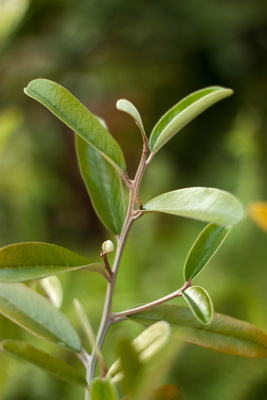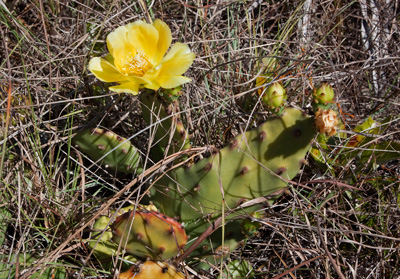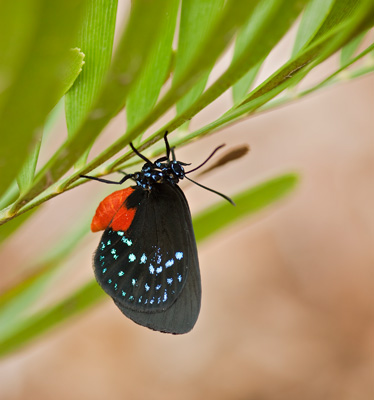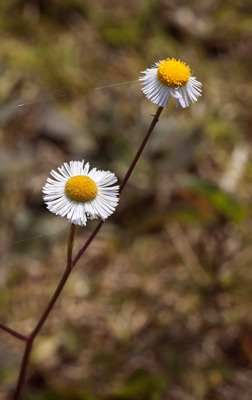Let’s see what we can do with a small, inhospitable plot of land. I have in mind an area in my front yard, about four feet deep tapering to about two feet. It runs north-south, is about seven feet wide and backs up against the house. It’s rocky, gets brutal summer sun and intense rain, including runoff from my roof. In other words, the worst that South Florida weather can throw at it.
Here are my requirements for this difficult space: I do not want to have to “baby” the plants here, or have to do much pruning or cleaning up. I am lazy.
Native plants must be the way to go. Something must have evolved to live in these circumstances. Plus, natives should not require much maintenance once established in the correct place.
Pine rockland is somewhat similar to this niche — lots of sun, usually dry, hot and rocky. Wildfires (or prescribed fires) keep pinelands from turning into hardwood hammock, so that hardwood trees won’t overtake the pines and steal their sun, but we won’t need to go that far. Think of this as a mini pineland, minus pines and saw palmettos. Kind of like the little sandy open areas between larger plants and trees.
Let’s start with larger plants at the back near the house, getting smaller towards the front of the plot. South Florida has a native croton, appropriately called pineland croton (Croton linearis). It grows to a manageable three feet tall, and will spread by seed, but is not overbearing. It is an easily overlooked plant, a little spindly, with olive-green leathery oval leaves and very small white flowers.

The native pineland croton is a workhorse and drought tolerant. Kenneth Setzer/FTBG.
Sound too plain? Think of it as a workhorse, asking for little but giving a lot. It is the only host for Bartram’s scrub hairstreak butterflies, one of the host plants for the Florida leafwing butterfly, and a nectar source for the cassius blue butterfly and numerous others. It tolerates, even requires, low-nutrient well-draining rocky soil, and is very drought tolerant. Plant a few crotons a couple feet apart from each other and in time they’ll fill in and make a nice backdrop.
You might think of cacti as inoffensive little holiday gifts or as denizens of the desert, surviving on obscenely small amounts of moisture. But they live throughout the new world, including subtropical Florida.
I actually remember my first cactus. My dad and I bought it when I was about 6. My father kept saying, “That cactus looks dry. It needs more water.” You can imagine what happened: it soon rotted due to overwatering.
Eastern prickly pear cactus however (Opuntia humifusa) can tolerate our rainy summers. Native to most of the country, it’s a tough plant. Let’s plant some of these a little closer to the front of the plot. They hug the rocky ground and bask in full sun. The flowers are heart stoppers — huge, bright yellow, with dark red centers against the green plant. The fruit are even edible.

The flowering eastern prickly pear cactus can tolerate our rainy summers. Kenneth Setzer/FTBG.
Now to fill in some open space with oakleaf fleabane (Erigeron quercifolius), in the aster family. Often disregarded as a weed, this annual’s flowers are just beautiful, happy, bright white discs with a yellow center. They get to about two feet tall or so and can add variety among the crotons.
The coontie, America’s only endemic cycad, makes a nice addition to any pineland planting. Zamia integrifolia is worthy of an entire plot to itself, having been pushed to the edge of oblivion by settlers making arrowroot flour from it. Nowadays we know cycads are carcinogenic, but the rare atala butterfly finds it palatable nevertheless. This primitive-looking plant is the atala’s only host.
Coonties prefer a more raised area for even better drainage. Plant a part of old — very old — Florida, and watch for your coonties to produce cones. Like pine trees and other gymnosperms, they do not flower.

Atala butterfly on a coontie, its only host plant, not long after emerging from its chrysalis. Kenneth Setzer/FTBG.
Consider transitioning from your little pineland with the softer, glossy green foliage of wild coffee, Psychotria nervosa. This native grows on its own into a bush about six feet tall or more, but is a bit less drought tolerant than the others. Its fruit attracts birds and insects. Wild coffee likes a little more shade too, so use it as a hedge under a tree (like a native stopper or firebush) to segue from your pineland plants into your hardwood hammock, bog garden or maybe even a fern grotto. You can find a native to fit all these habitats and more.

The oakleaf fleabane is an easy, native wildflower and grows to about two feet. Kenneth Setzer/FTBG.
Many of these plants will be available at Fairchild’s Spring Garden Festival, featuring the Spring Plant Sale and Butterfly Days, April 12-13.
